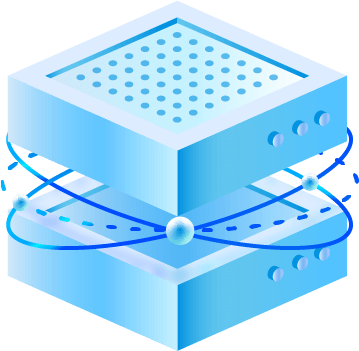

基动态管理系统是一种指导决策和实践管理系统,涵盖内容广泛、复杂,且需要及时更新。其包括企业基、产品、客户、合同、人员等方面动态管理。还需要将其与采购、生产、、财务等业务系统进行整合,以提高企业管理效率。
在具体实践中,基动态管理系统还需要具备数据分析、数据挖掘等高级能,以更好地支撑决策和管理。随着移动互联网发展,基动态管理系统也需要提供移动端支持,让用户可以在任何时间、任何地点随时查询和使用系统。
Introduction
With the rapid development of digital technology, various types of information have become more important than ever before. The volume, diversity, and complexity of information have increased, thereby creating new challenges in its management. Fortunately, basic information dynamic management systems have been developed to help manage this influx of data effectively. In this article, we will discuss what a basic information dynamic management system is, its functions, and how it works.A basic information dynamic management system, also known as BDMS, is an advanced software tool that facilitates the real-time management of complex and voluminous data. It integrates different systems to provide a comprehensive view of information sources, including data storage, data processing, data ysis, and data visualization. The system supports a wide range of data types, such as structured, semi-structured, unstructured, and multimedia data.
Moreover, the BDMS provides superior performance concerning data availability, data recovery, data security, data quality, and compliance with legal regulations. BDMS plays a crucial role in business intelligence, academic research, scientific studies, healthcare management, government governance, and social planning.
BDMS has a wide range of essential functions, including:
Data Integration: BDMS streamlines data from multiple sources, such as databases, spreadsheets, and web pages, into one uniform data format. Data integration ensures data consistency, eliminates data redundancy, and improves data quality.
Data Cleansing: BDMS detects inaccurate, incomplete, or irrelevant data. It cleanses data intelligently by identifying and correcting errors, filling in missing values, and removing outliers.
Data Transformation: BDMS converts data from one format to another. This process is crucial for data ysis, which often requires data in a specific format. BDMS supports data transformation across multiple data types.
Data Management: BDMS stores, retrieves, updates, and deletes data efficiently. It can handle large volumes of data and manage data in real-time. BDMS provides a centralized data management system that allows users to access data quickly and securely.
Data Analysis: BDMS provides a sophisticated framework for yzing data. It supports various data ysis techniques, such as descriptive, predictive, and prescriptive ytics. Moreover, BDMS allows users to create customized models and algorithms for yzing data.
BDMS works by integrating different data sources into its system. It then processes the data into a uniform format, cleanses it, and transforms it into a suitable format for ysis. The BDMS stores the data in a centralized database and provides tools for querying, retrieving, and updating the data. The BDMS also executes data yses through its sophisticated algorithms and models. Finally, the BDMS visualizes the data by creating insightful reports and dashboards.
BDMS provides significant benefits, including:
Improved Efficiency: BDMS reduces the time and effort required to manage large volumes of data. It automates data processing, improves data quality, and speeds up data ysis.
Informed Decision-ng: BDMS provides valuable insights into data sources. It enables better decision-making based on accurate, timely, and comprehensive information.
Competitive Advantage: BDMS allows businesses to identify opportunities and threats more rapidly than their compes. It provides businesses with critical insights into market trends, customer preferences, and compes' activities. As a result, businesses can adjust their strategies accordingly to stay ahead of the competition.
在大数据时代,谁能更好地应对化发展,谁就能在市场竞争中更具优势,企业也不例外。基动态管理系统是企业化基架构,其组成科学与否直接决定了企业化成败。那么,基动态管理系统都包含哪些内容呢?以下进行详细介绍。
基设施设备是指为数据存储、数据处理以及包括互联网、局域网等构建一些硬件工具。其中主机、交换机、存储设备、高能计算都是该类设备代表。这些设备作用是实现数据存储、运算和传输,是整个系统基构建。
对于系统选型上,需要根据企业需求,选择适合自身设备,充分保障系统可、稳定以及高可用;而在硬件质量上,需要确保设备品质过关,不断进行设备升级,去满足企业业务需求。
数据库系统是指一个完整数据库,提供数据管理、数据处理和数据分析等能。数据库分类分为关系型和非关系型两种。关系型数据库系统往往包括Oracle、MySQL、SQL Server等,而非关系型数据库就有NoSQL、MongoDB等。
数据库使用在企业中非常广泛,如管理、人事管理以及库存管理等业务都离不开数据存储和管理,而好数据库系统设计和优化能够有效增强企业决策效力。
安全系统是一个企业化建设极为核心一环。由于企业内部、外部交流益频繁,企业商业机密保护等问题也将得到益重视。安全系统一般包括安全、数据安全、应用软件安全以及安全管理等方面内容。
安全系统作用是确保企业安全,提高保密、完整和可用,避免被恶意攻击或泄露等情况发生。
平台软件系统是基于企业实际情况,对企业业务流程进行分析而设计一些软件系统。这类软件了客户、商家、供应商等,而提供了一套完整企业营运,以及管理解决方案。如ERP(企业资源计划)、CRM(客户关系管理)等软件,大利了企业在、业务流程、人员管理等方面整体协调。
平台软件系统可以多种方式,如自主、购买第三方技术提供商,或是采用SaaS等方式启用以适应企业需要。
应用软件系统是基于业务需求而出来一些应用,具体实现有订单处理、管理、资源管理、库存管理等等。它们使用平台软件或者无需平台软件直接实现企业常流程应用软件。如电子商务平台,订购在线,它能够优化订单处理流程,减少数据输入出错等问题。
应用软件系统对企业业务流程最直接关系。这需要根据不同企业软件系统制定有针对定制化服务。而且,企业应定期为应用软件系统进行升级、工作,同时跟进新技术趋势,保证企业不断拓展业务范围和实现提高服务质量目标。
伴随着科技高速发展,各种各样软件系统应运而生,其中一个非常重要系统就是该系统。那么,该系统包含哪些内容呢?在这篇文章中,我们将一一探讨。
我们需要了解该系统定义和作用。该系统是一个包含多个模块综合系统,包括数据库、、应用程序、等相关技术,主要用于管理企业或组织化建设。它作用是实现数据高效管理、快速传递和精准决策。
为了更好地理解该系统,我们需要了解以下五个小标题具体内容。
该系统核心模块包括但不限于以下内容:
以上五个模块是该系统最核心组成部分,可以协同完成企业或组织化建设。
以下是该系统可以应用场景:
在以上场景中,使用该系统可以提高工作效率、降低错误率、优化资源配置,从而提高整体竞争力和盈利能力。
如果企业或组织决定使用该系统,需要制定一个合理实施方案,包括以下要素:
一个合理实施方案,可以保障该系统稳定使用和有效推广。
我们需要关注该系统未来发展趋势。在技术不断更新换代今天,该系统也需要做出相应升级和改进,以适应需求不断变化市场环境。
据业内专家,未来该系统优化方向主要聚焦在以下几个方面:
综上所述,基动态管理系统包括内容涵盖了数据收集、数据分析和数据应用三个方面,是企业数字化转型重要基石。该系统采用先进技术手段,能够完整记录企业各项数据,凭借强大数据分析和挖掘能力,能够为企业提供有价值数据建议和战略指导。最终实现企业高效经营和合规经营双重目标。
